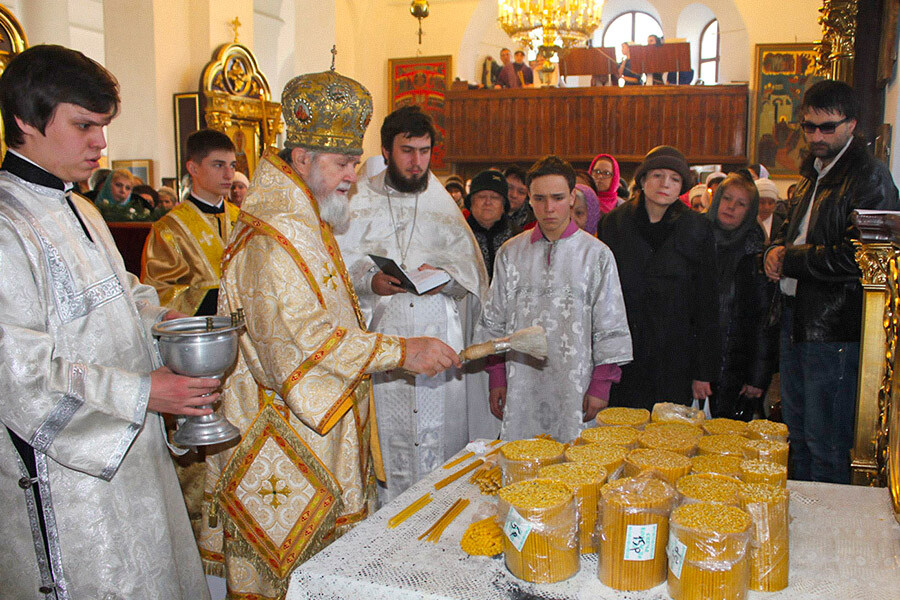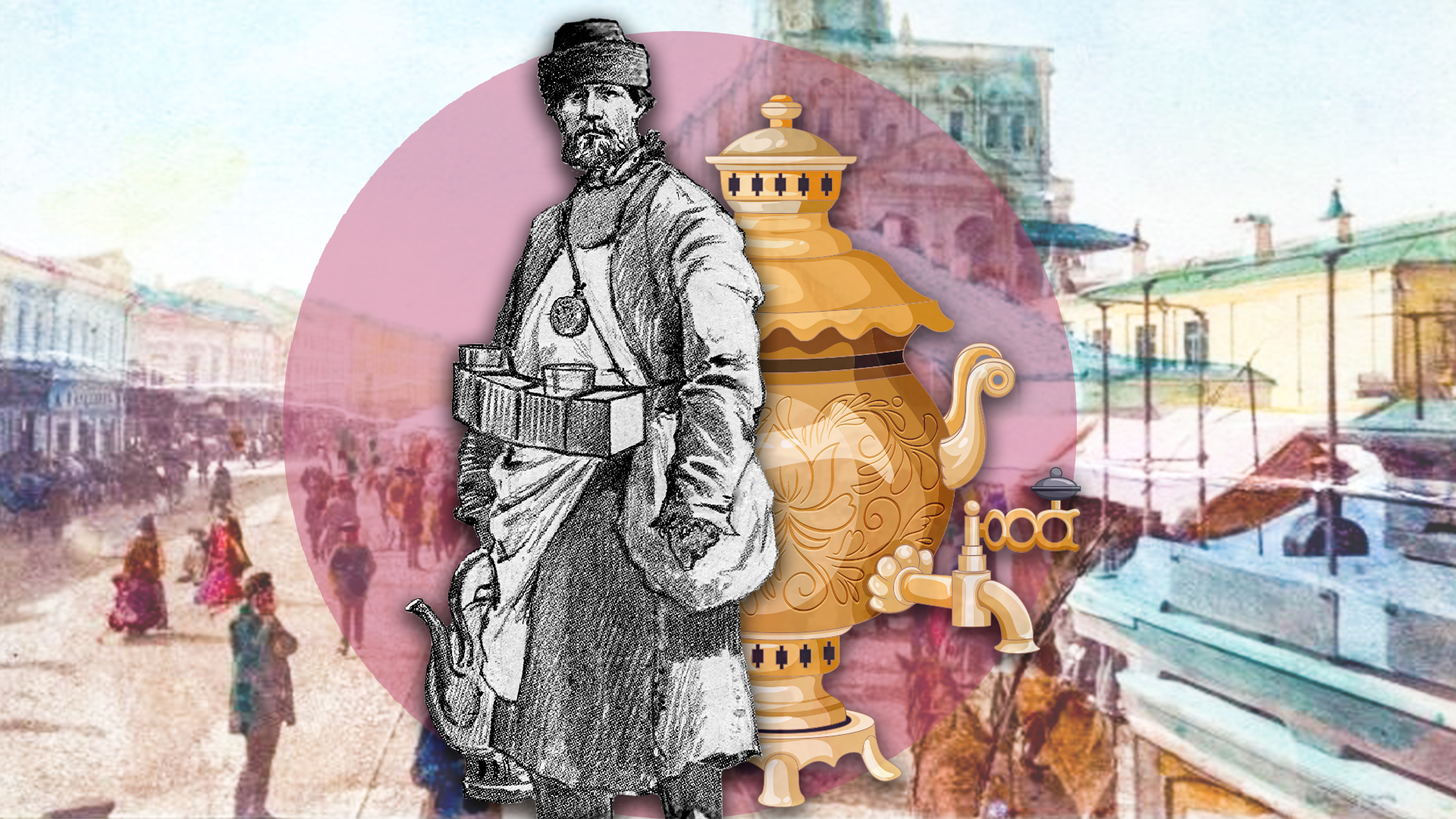
What is ‘Candlemas’ & why do Russians celebrate it?

‘Candlemas’ (also known as the ‘Feast of the Holy Encounter’ or the ‘Feast of the Presentation of Jesus’) is a holiday dedicated to Christ. What type of events do Orthodox Christians remember on this day?
Candlemas in the Russian Orthodox tradition
 'Sretenie Gospodne' ('The Holy Encounter'), Russian icon, Novgorod, 15th century
'Sretenie Gospodne' ('The Holy Encounter'), Russian icon, Novgorod, 15th century
In English, the common name for this holiday is ‘Candlemas’, which hints at the candles that are being consecrated (blessed) on this day. But, in Russian, the name of the feast is ‘Sretenie’, translated as ‘encounter’, so it’s closer to another English name of the holiday, ‘The Feast of the Holy Encounter’. What kind of encounter was it?
On the 40th day after Jesus' birth, his parents, Joseph and Mary, carried the baby to the Holy Temple in Jerusalem. According to the law, forty days after birth, it was necessary to dedicate the baby to God and offer an animal sacrifice, so Joseph took two pigeon chicks with him.
It was in the temple that the meeting of the infant Jesus and Simeon the God-receiver happened. Simeon was a priest in the temple, who recognized the Son of God in the child. According to the biblical lore, Simeon was very old (he allegedly lived for more than 300 years) and had been waiting for the appearance of Jesus for a long time. It had been revealed to him by the Holy Spirit that he should not see death before he had seen Christ.
 Presentation of Jesus at the Temple, 1529, by Romanino (c. 1485 – c. 1566)
Presentation of Jesus at the Temple, 1529, by Romanino (c. 1485 – c. 1566)
Recognizing the coming Messiah in the infant and taking him up in his arms, Simeon said: "Lord, now let your servant depart in peace, according to your word; for my eyes have seen your salvation, which you have prepared in the presence of all peoples, a light for revelation to the Gentiles and for glory to your people of Israel." Jesus' mother, Mary, was struck by these words and Simeon explained to her that her child “is set for the fall and rising of many in Israel”. It is believed that Simeon died shortly after receiving Christ in the Holy Temple.
 'Simeon and Anna in the Temple' by Rembrandt
'Simeon and Anna in the Temple' by Rembrandt
However, Candlemas is above all a joyful event: humanity (represented by Simeon) met God on this day. The prophetess Anna, an 84-year-old widow, was also in the temple at that moment – she also recognized Christ and joyfully began to tell everyone in Jerusalem about his coming.
According to the rules of Orthodox worship, during the Candlemas service, special ‘Candlemas candles’ are necessarily consecrated – the main symbol of the holiday, a symbol of the divine light that Jesus brings to the world by his appearance in it. Candles were of particular importance for this holiday among the Russian people.
Candlemas in the Russian folk tradition
 The candles prepared for blessing
The candles prepared for blessing
Like many other Orthodox holidays, Candlemas among Russian peasants was endowed with its own meaning, based on the name of the holiday – ‘encounter’ (such a reinterpretation in science is called ‘folk etymology’). In the popular understanding, this day is the “meeting” of winter with summer.
This was reflected in the "work regime" of the day – it was considered bad luck to go on trips and start any business on Candlemas. But, the next day, February 16, was called ‘Pochinki’ (‘beginnings’ in Russian). In the early morning of Pochinki, the peasants got up and began to prepare for the new agricultural year, first of all checking working tools and horse harnesses, hence the saying: "Grandfather gets up early in the morning to fix a summer harness and a century-old plow."
 Plato, Metropolis of Feodosia and Kerch, blesses the candles on Candlemas day
Plato, Metropolis of Feodosia and Kerch, blesses the candles on Candlemas day
Candlemas Day itself symbolized what the coming year would be like. In order to guess the weather, on the eve of Candlemas, village children gathered on a hillock and asked the sun to appear from behind the sunset clouds by singing a chant. If the clouds really parted, it was considered a good omen and promised a warm year.
Folk beliefs gave special power to ‘Candlemas water’, which was collected from an ice hole on the night of Candlemas – it was considered almost as curative as Epiphany. Sick relatives and sick cattle were sprinkled with water, while children were bathed in it and drank it.
Candlemas candles, consecrated in the church, were also considered a powerful talisman. In Western Slavic beliefs, these candles were called ‘gromnitsy’ (from the word ‘grom’, which means ‘thunder’) – it was believed that they drove away evil spirits and protected the house from thunderstorms and lightning strikes. Russian peasants kept Candlemas candles in the ‘red corner’, on a shelf behind the icons and would light them during especially important family home prayers.












